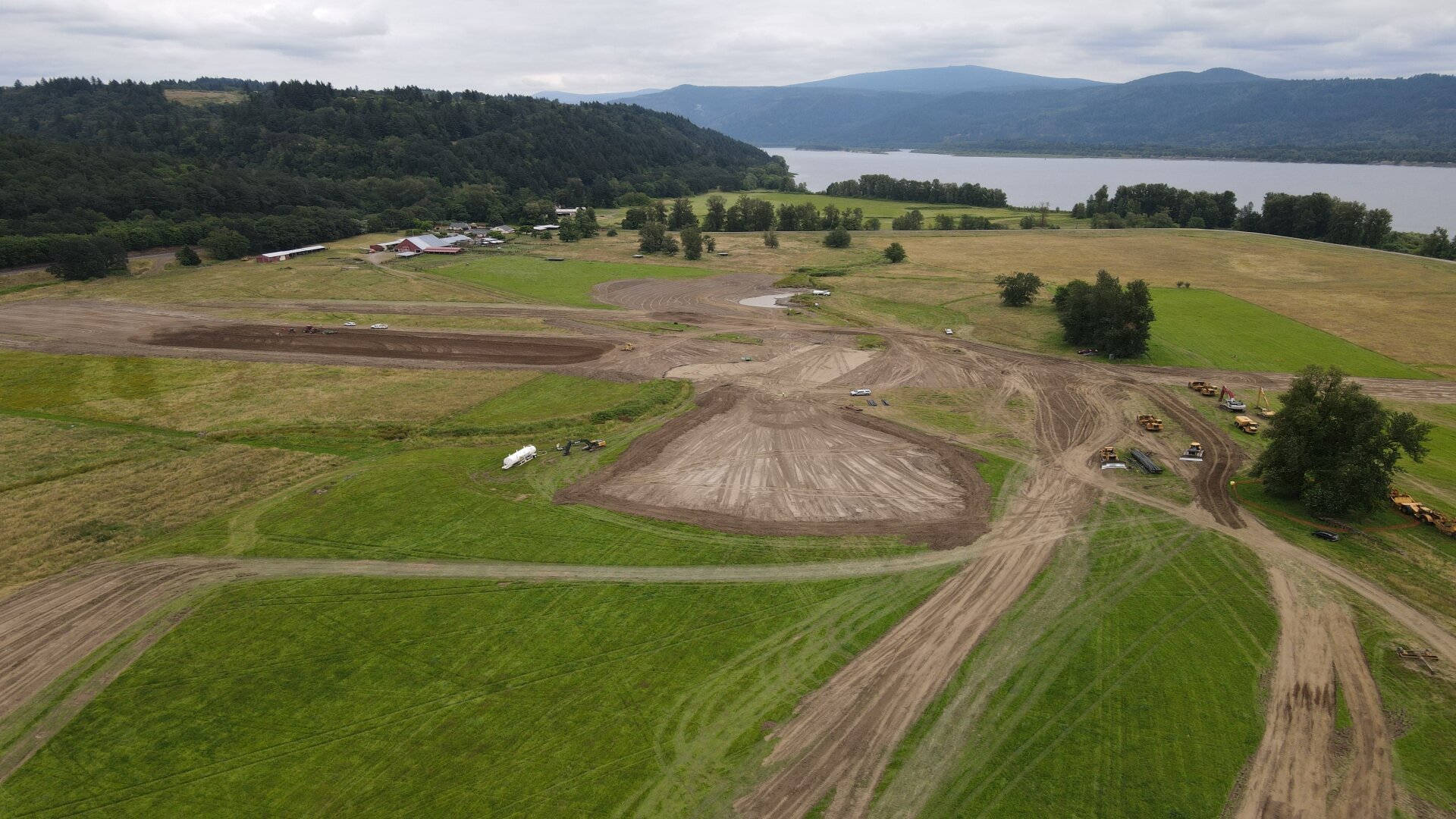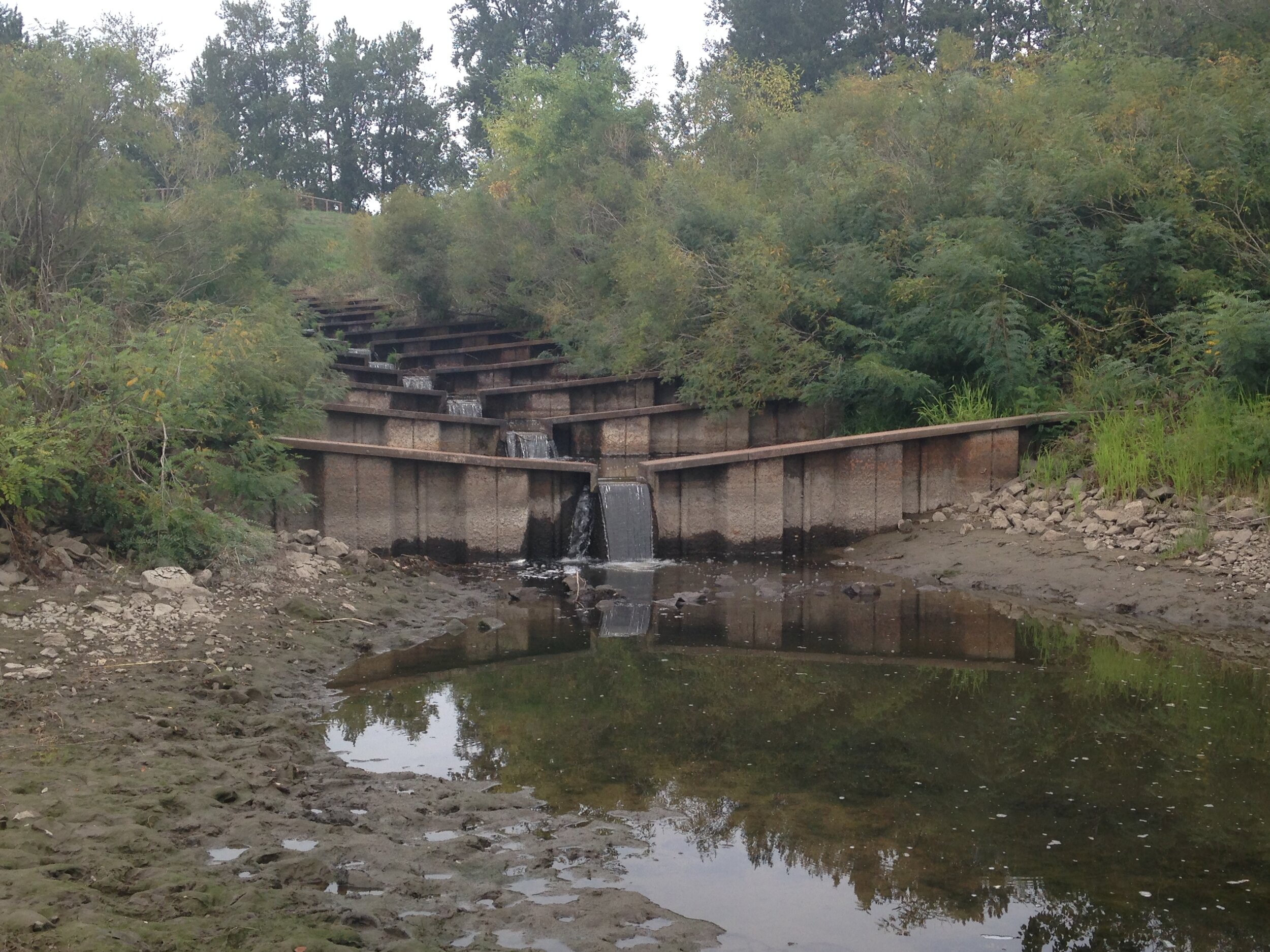
An overhead shot of the construction area at Steigerwald Lake. The Columbia River, which the refuge will soon be reconnected to, can be seen in the background.
The Steigerwald Reconnection Project has one more BIG year of construction in 2021!
This is the year when all the hard work pays off. Later this year, the floodplains of Steigerwald Lake National Wildlife Refuge and Gibbons Creek will be reconnected to the Columbia River for the first time in generations.
Folks traveling by on SR14 can expect to see heavy equipment on site as early as mid-April, and the Columbia River Dike Trail will again be closed near the western edge of the Refuge.

Trails will remain closed at the refuge through 2021 to ensure the safety of crews and the public.
Starting in late April or early May – depending on weather conditions – crews will begin major earth-moving work. They will finish constructing the east and west setback levees, which are the critical component that will allow the current levee to be brought down. The setback levees reduce flood risk for nearby property owners, allowing us to open connections to the Columbia River and bring back Refuge lands to their original purpose as a floodplain.

Crews use heavy equipment to move and compact dirt during levee construction. Contractors will work over the course of the summer to place 8 inch “lifts” of soil one at a time across the levee in order to ensure that the levee is properly compacted.

A bulldozer scrapes the ground moving a large pile of soil during levee construction.
Once setback levees are complete, we will remove more than two miles of the existing levee and create four direct breaches between the Refuge and the Columbia River. These direct connections allow salmon and lamprey unfettered access to the site, and allow for seasonal flooding throughout the floodplain.
Work this season will also help solve many issues with Gibbons Creek. For decades, the creek has flowed through a diversion structure into an elevated canal across the refuge, then down a fish ladder before discharging into the Columbia. These artificial features will be removed and Gibbons Creek will be released into its historic alluvial fan and floodplain, which was prepped with large wood habitat structures and native plantings two years ago.

The Gibbons Creek fish ladder that will be removed during year two of the reconnection project.
Some of the final work entails revamping the Refuge trail system. Crews will create a newly aligned multi-use trail along the Columbia River waterfront, with an extra mile of trail, two new bridges and additional viewpoints.
Major construction is expected to last until November and December, and crews will spend the winter revegetating around the Refuge in the largest planting effort to date. The Refuge will be excited to welcome the public back in spring 2022.